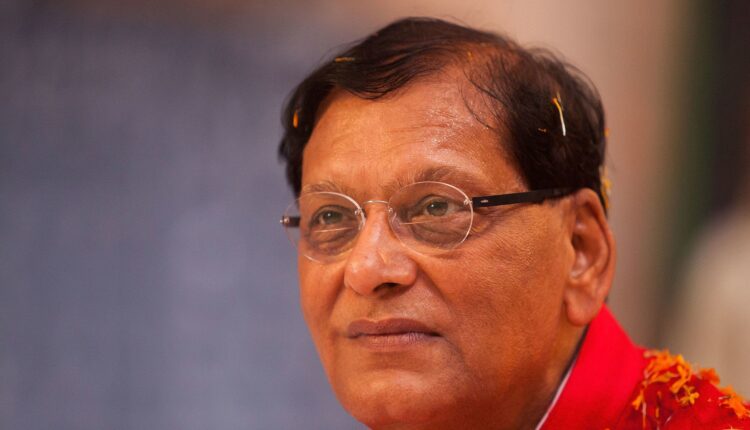
The Noble Soul Who Cared For the Scavengers
It all began with daredevilry. Bindeswar Pathak, a tiny toddler of seven wondered why the thin little woman who came through the backdoor, was called untouchable. He wondered why his grandmother sprinkled holy Ganga water over the floor where the woman had walked, and was told she had polluted it. So, one day, she dared to touch her saree, to see what would happen to his body. He had to plunge into cold Ganga water and drink a mixture of milk, ghee, curd, cow urine, and cow dung to purify himself. His grandmother mixed it up fiercely and forced it down him. Later, he learned the reason for it. The poor, creeping woman belonged to the Valmiki community, the lowest in the caste hierarchy. Its women mostly made a living by collecting night soil, cleaning it out from buckets, and drying pit toilets with a metal brush and pan often with bare hands. Then they carried it on their heads, in baskets, to some far-off place. They could not use the wells unless some clean souls drew water for them. It was fine to touch a dog, but not these human beings, who were exactly like him.
In 1950, the notion of untouchability was banned in India. Article 17 of the Constitution made ‘practice in any form forbidden’ and ‘punishable’. But it continued because most Indians who had toilets in their homes had pits that needed cleaning. So began Bindeswar’s obsession with sanitation, which soon became a mission. If Indians had proper flush toilets, they could clean themselves. Liberation of scavengers had been Mahatma Gandhi’s dream, even more strongly than independence. now it was for the boy from Bihar. Helping another human being was a prayer to god. In 1970 he set up an organization, Sulabh Sauchalaya, meaning accessible toilet. Sometimes he felt he loved it more than his children or his wife. The key to everything was his cheap pour-flush toilet, essentially a sieve-like clay-lined pit, flushable with only a liter of water. From which black or grey water leached in the soil and in which the dry solids gradually degraded into an odorless mulch that could fertilize the fields.
A student of Sociology designed it in 1969; in 1973 a local town in Bihar ordered two demonstration models for the municipal compound. They caught on. By 2020, 110 million had been installed across the country. In 1974 he built India’s first public lavatory, with 48 seats, urinals, and 20 bathrooms. A pee cost one rupee, a poo two. When it opened in the city of Patna 500 people used it on the first day. By this year almost any bus stand, railway station, or market had its own Sulabh Sauchalaya; around 20 million use them each day. The revenue subsidized smaller community toilets out in the villages and toilets in schools, which encouraged girls to attend.
The success story of Sulabha Sauchalaya has born in a struggle. Shortly after university, he spent three months among scavengers in the town of Bettiah, enduring with them the stench, humiliation, and filth that leaked into his hair. His family was appalled by his peculiar, shameful obsession; his father-in-law disowned him. As his inventions spread, the scavengers began to rise. he established centers for the women where, in identical pale blue saris, they could learn to read, write, and open bank accounts and could train as embroiderers and candle makers. He also took them on trips to the Nathwara temple, which banned such women, and the 5-star Maurya Sheraton restaurant in Delhi. At both places, those in charge begged him to take them away. In his gentlest Gandhian mode, he refused. By this year, some 2 lakh women have been liberated and their right to live with dignity has been ensured.
He leaves behind a wonderful autobiography Road to Freedom (2000) based on 20 years of research and fieldwork. It’s a seminal piece of work on scavenging, its sources, history, and geographical
spread. He resolved to take action not out of sympathy for the scavengers but in the firm belief that scavenging is a dehumanizing practice that would have a destructive impact on modern Indian Society. Despite having a preventive Manual Scavenging Act 2013 it is indeed sad that this abhorrent practice is still in vogue in IT savvy State of Karnataka. As per the reply in the parliament, 43497 people are still engaged in manual scavenging, with 97.7% of them belonging to the Scheduled Caste. Although dry pit toilets were banned in India in 1993, two decades later 9.6 million were still hand emptied in India. As per the NFHS V survey findings, a fifth of the population still defecated in the open air, lining fields and cuttings as the trains went past. Only 52% of rural and urban households in the lowest wealth quintiles have access to toilets. This is in a country that has landed on the moon and is aiming to go to Mars.
Yet Dr Pathak was always optimistic and confident things would improve., if the will was there. Like Dr Martin Luther King Jr , the visionary, he hoped one day all Indians, united in cleanliness, would worship together, dine together, fetch water from the same well, and bathe in the same pond. Even the likes of his grandmother would sit with the people they had thought filthy, and apply no Ganga water afterwards. Dr. Pathak serendipitously died on India’s seventy-sixth Independence Day, resolutely fighting to free the hapless scavengers from the scourge of humiliation. One hopes the gap between rhetoric and reality of Swachh Bharat is bridged by the political class; in memory of the great social reformer of India.
